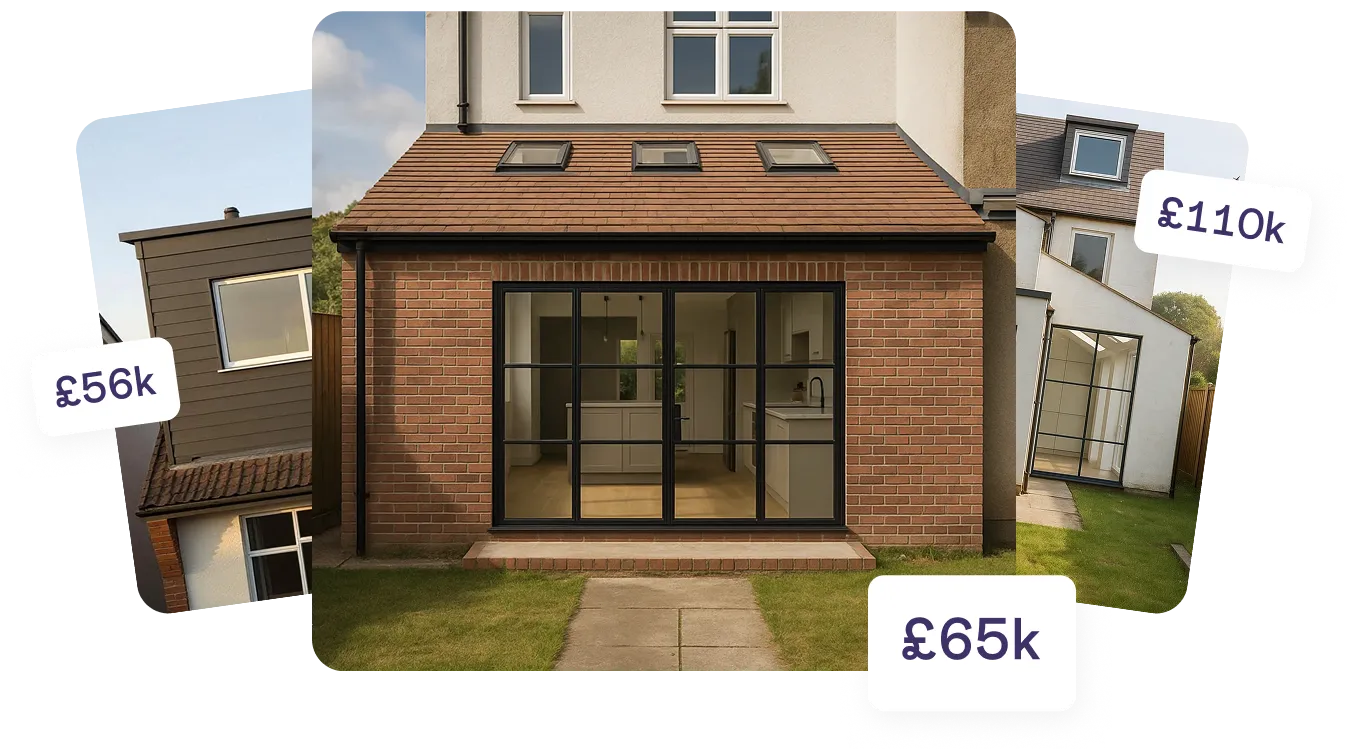Prefer smaller lights to one big one? Make sure you have the plugs you need around key spots, such as the sofa. And if you’re all about overhead lighting, you might want to consider adding a dimmer switch, to help make the space more relaxing during the evening.
Hallway: When renovating your hallway, make sure you don’t forget to make your light switches easy to reach when you get through the door. No one likes stumbling around in the dark.
Bedroom: Are you a person who likes to move their furniture around? If so, we’d recommend installing plug around the room, rather than fixing your bed to one spot with in-build fixtures.
What kind of lights to choose
Ultimately, what lights you choose will be down to your personal taste. However, not all lighting fixtures are created for the same purpose and they generally fall into one of three categories.
General / Ambient
These tend to be the overhead lighting that helps illuminate the whole space, allowing for general activities throughout the day and night (such as searching for your keys).
Because they play such a key part to your home, you’ll want to pay particular attention to the level of brightness they bring into the space. Too much glare and you’ll end up with a house full of headaches.
Lights you might consider for this role...
- Pendant
- Spotlights
- Track lights
- Downlights
- Bathroom lighting
Task
As the name suggests, these lights help you with specific tasks, such as reading or working in an office area. You might dot these around the home yourself or even install them into key fittings, such as under your cabinets.
Lights which fall into this category are…
- Wall lights
- Shaver lights
- Under-cabinet lights
- Table lamps
- Low level marker lights
Accent
These lights are there for no other reason than to add a little drama to your home, maybe even to show off a particular feature you’re proud of, such as art or a skylight. You can even use them outside to keep key areas of your garden in the spotlight.
- LED strip lights
- Picture lights
- Mirror lights
- Effect lighting
- Jacuzzi lights
- Uplighters
When to lock down your ideas
You’ll likely start exploring your lighting options during the proposed design stage, however, these ideas won’t be set in stone for your builder unless you commission ‘electric and lighting drawings’.
At Resi, we provide this as an optional addition to our building regulations package. This allows you to lock in your electrical and lighting plan early on, with both your lighting and power points all clearly defined in the drawings your contractor will work from.
Without these extra drawings, your standard building regulations package will still lay out your electrical work, ensuring your build is both legal and safe, but without detailing where exactly these features will go. Then, when it comes to construction, your builder and electrician should give you the chance to walk around the site to mark on the walls and ceilings all of your sockets, switches and lights.
This approach will save you money but your builder might ignore your placements when they don’t have an exact guide to follow. This can be an issue futher down the line, as correcting these mistakes can be very disruptive once you're settled into your new space.

Top tips…
If you do opt for ‘electric and lighting drawings’, make sure you ask your technician for their opinion too. Their expertise often means they’ll spot mistakes you might have missed, such as not enough plugs for phone charging or a place to plug in your kettle.
To create a calm, cosy area, make sure you’re thinking about layering your lights. You want to create a contrast between pools of light and spaces of shadow.
Installing your lighting will happen during two key stages. First, the cables are run during the first fix before getting finished off during the second. We recommend having a walk around the space after this first stage is finished, to double-check everything is where it should be.
Looking to go green? Consider using LEDs in your general lighting. They’re highly energy-efficient, cutting up to 90% from energy usage and can often be connected to a dimmer to give you more control over the warmth and brightness of the light in your home.
If you’re buying a home to renovate, make sure you have a surveyor check out the existing wiring. If the wiring is old and uses the old cable colours (black instead of blue for neutral) then you’ll need to budget for rewiring. Likewise, if your current wires are over 10 years old or you want to change 50% more of your current outlets.
For tailored advice about your project, why not talk to our team? We provide free consultations to homeowners nationwide, free of charge. This allows you to get expert advice so you have the confidence to get started unlocking your home’s potential. Book yours now.






